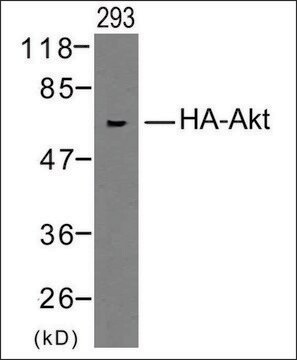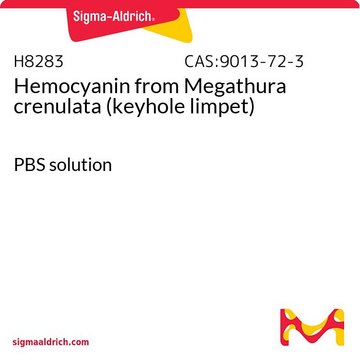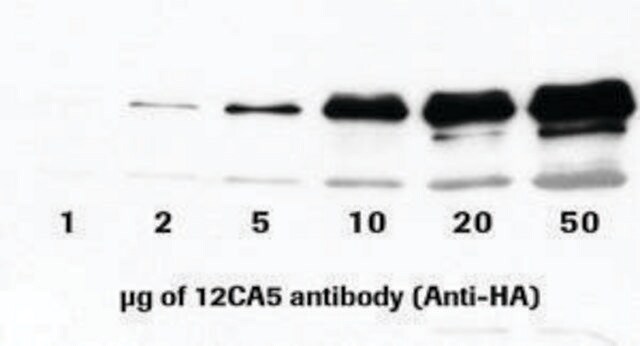H9658
Anti-HA monoclonal
clone HA-7, ascites fluid
Sinónimos:
Anti-HA, Hemaglutinina anti-gripal
About This Item
Productos recomendados
biological source
mouse
Quality Level
conjugate
unconjugated
antibody form
ascites fluid
antibody product type
primary antibodies
clone
HA-7, monoclonal
contains
15 mM sodium azide
technique(s)
immunocytochemistry: suitable
immunoprecipitation (IP): suitable
indirect ELISA: suitable
western blot: 1:20,000 using extracts from 293T (human embryonic kidney) cells expressing a recombinant HA-fusion protein
isotype
IgG1
shipped in
dry ice
storage temp.
−20°C
target post-translational modification
unmodified
¿Está buscando productos similares? Visita Guía de comparación de productos
General description
Specificity
Immunogen
Application
- immunoprecipitation in human embryonic kidney 293 cells
- immunoblotting in HeLa cells
- immunopurification in human embryonic kidney 293 cells
- immunostaining for electron microscopy in mouse embryonic fibroblasts
- in immunocytochemistry of hippocampal slices
- Immunoblotting, to study the expression of fusion protein
- Coimmunoprecipitation assay
- Immunoblotting of lysate protein
Biochem/physiol Actions
Storage and Stability
For extended storage, freeze in working aliquots. Repeated freezing and thawing, or storage in "frost-free" freezers, is not recommended. If slight turbidity occurs upon prolonged storage, clarify the solution by centrifugation before use. Solutions at working dilution should be discarded if not used within 12 hours.
Disclaimer
¿No encuentra el producto adecuado?
Pruebe nuestro Herramienta de selección de productos.
Storage Class
12 - Non Combustible Liquids
wgk_germany
nwg
flash_point_f
Not applicable
flash_point_c
Not applicable
Elija entre una de las versiones más recientes:
¿Ya tiene este producto?
Encuentre la documentación para los productos que ha comprado recientemente en la Biblioteca de documentos.
Los clientes también vieron
Nuestro equipo de científicos tiene experiencia en todas las áreas de investigación: Ciencias de la vida, Ciencia de los materiales, Síntesis química, Cromatografía, Analítica y muchas otras.
Póngase en contacto con el Servicio técnico










